- Voltage Regulation: B2B chargers take DC input from a source battery and convert it to a suitable DC output voltage to charge a secondary battery. They ensure that the charging voltage is appropriate for the battery type and state.
- Isolation: These chargers often electrically isolate the two batteries, which is important for preventing issues like battery drain and ensuring that the source and destination batteries operate independently.
- Multi-Stage Charging: Advanced B2B chargers can provide multi-stage charging (bulk, absorption, float), which is essential for proper battery maintenance and longevity.
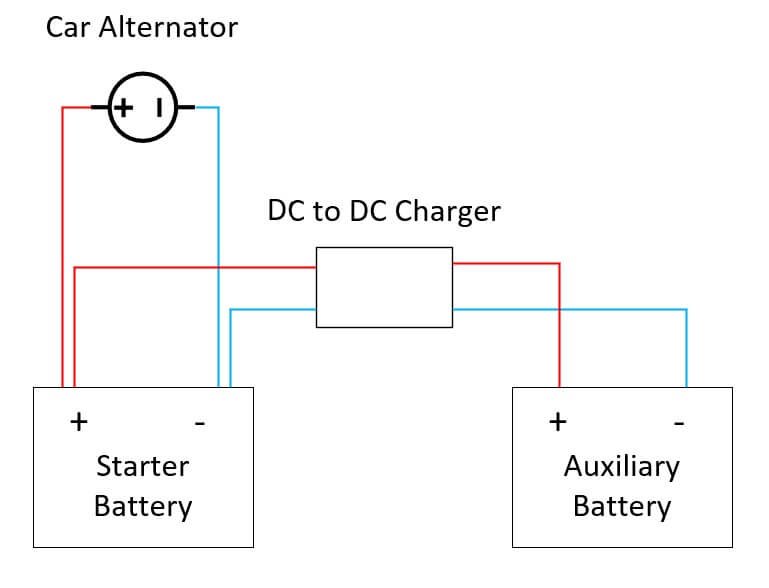
When do you need a DC to DC Battery charger?
- If you were to wire the starter battery directly to the auxiliary battery without a B2B charger, you might drain the starter battery down until you cannot start the engine anymore. It enables the starter battery to remain fully charged before charging your auxiliary battery.
- A DC-to-DC battery charger is like having a solar charge controller in parallel with the starter’s battery.
- If your car battery is 12V and the other battery is 24V, then you need a B2B charger.
- If you have a lithium (LiFePO4) battery, then you need a B2B charger.
Why Do I need a B2B Charger for a Lithium Battery?
The car alternator is not made to charge a battery with low internal resistance. This will lead to overheating of the alternator.
Victron Energy, a popular solar system manufacturer, did a test where they charged a lithium battery with an alternator.
They found that charging a lithium battery with a car alternator is not always the best solution. At lower RPM’s the alternator was overheating.
- The low internal resistance of a Lithium battery makes the alternator put out a large amount of current.
- A lead-acid battery has a higher internal resistance, thus doesn’t need a B2B charger.
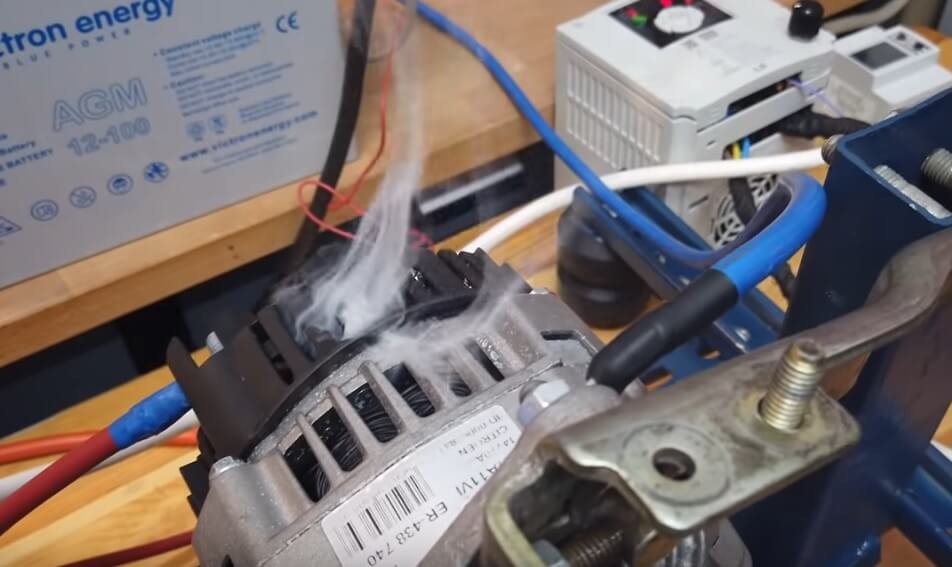
A DC-to-DC battery charger can reduce the charging current without damaging the alternator.
Although there were some flaws with this test setup:
- There was no fan installed on the alternator µ
- The cabling was oversized, decreasing the resistance even further and making the alternator deliver even more current.
- It was a small 70A citroën alternator, which you would find in a small car.
Ultimately, it’s still a manufacturer that wants to sell its product. But it was a good demonstration nonetheless.
DC to DC Charger Wiring Diagram
In this image, you can see the circuit diagram for a DC-to-DC battery charger.
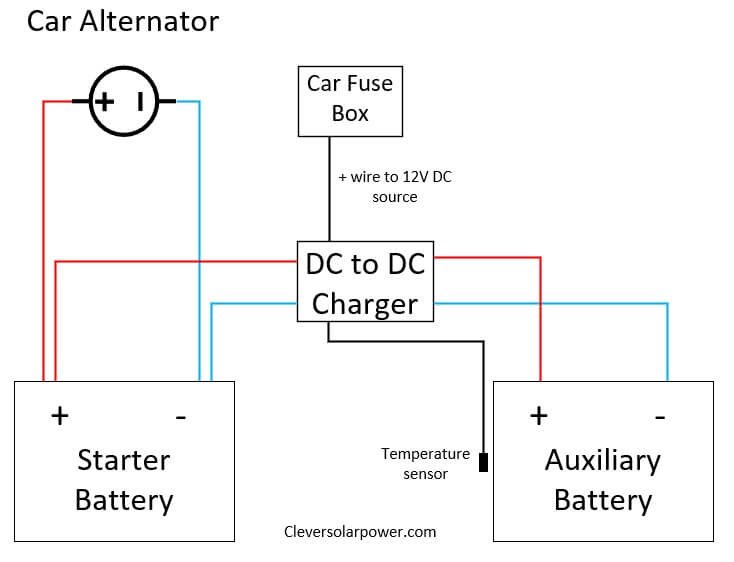
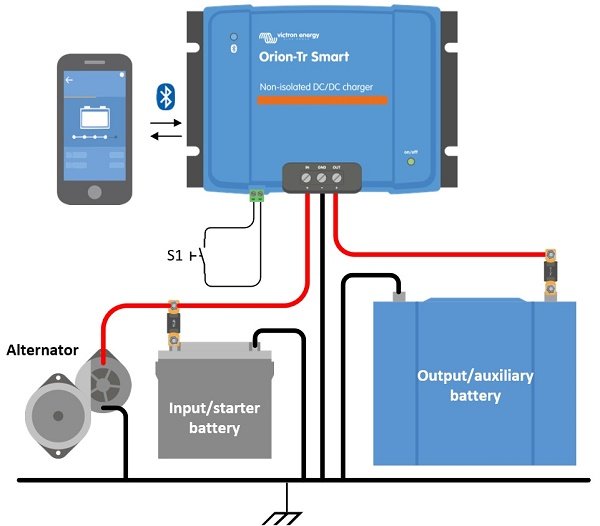
DC to DC Charger with Solar Input
Renogy now has a DC-to-DC charger with two inputs. One is for the auxiliary battery, and one is for solar panels.
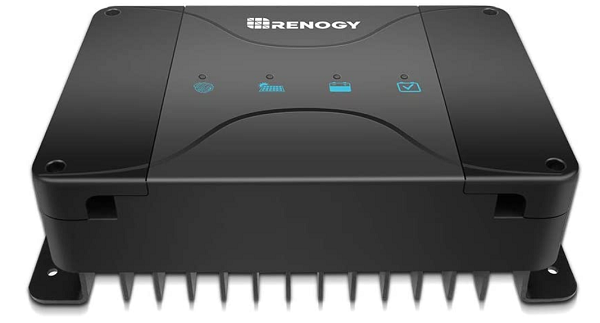
It uses their well-known DC-to-DC charger and adds another MPPT.
It comes in a 30 or 50A version. You can only use it with 12V and the max solar panel power is 400W.
View the price here on Amazon.

Recommended DC to DC battery chargers
There are two main manufacturers who make the Dc battery chargers, they are Renogy and Victron.
Renogy has a 20 Amp, 40 Amp, or 60 Amp version available.
Click here for prices on amazon.com

Victron has many versions available for 12, 24, and 48 Volts. The smart edition is able to be connected to your phone through Bluetooth so you can manually program it.
Click here for prices on amazon.com
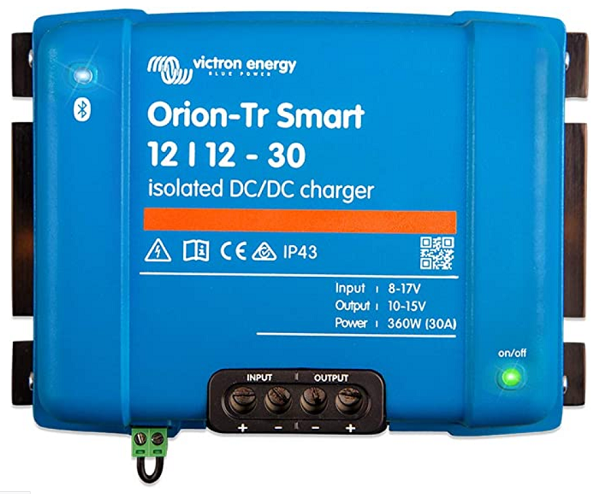
FAQ
How do I convert 24V to 12V in off-grid solar systems?
Read my article about it here.
What is the difference between isolated and non isolated dc to dc chargers?
Read my article here.

I’m an off-grid enthusiast. I created this website to give clear and straight-to-the-point advice about solar power. I’m also the author of the book ‘Off-grid solar power simplified‘. Read more about me on my about page, check out my Youtube channel, or send me a message.
Is the 40-amp renogy dc-dc charger ok for a 200 ah lithium battery ? Also can this charger be mounted sideways on a vertical wall ?
A 200Ah lithium battery can be charged at 100Amps. So no problem there. Make sure it’s well-ventilated. The cooling fins will be vertical, so the air must travel from the bottom to the top with a few inches of clearing. I don’t recommend installing it vertically. If there is no other option, then you can. Check the manual before you buy.
cool article I was getting ready to buy an 40amp dc to dc good thing I came across this because all I have is an 100ah lithium battery and the 20amp will save me some money. by the way I will be buying your off-grid book as soon as I get my ss check my wife and I will be moving to Arizona next year and want to get away from everything. northeast Arizona land of the free California sucks the government hates us old people.
My pleasure Bill. Thanks for your interest in the book. I think you won’t regret the purchase before ordering other items.
Could one of these be used to connect a LiFePO4 battery to the solar input of a solar generator (e.g., pecron e2000lfp)?
I assume the solar input expects a voltage anywhere above 12V, so yes you can charge a solar generator with a lithium battery through a DC to DC charger.
Generac has come out with a 9000-watt 400-volt natural gas DC generator to be used with their proprietary PWRCell whole home battery backup system.
Would it be possible to integrate this generator with 3rd party equipment? Could its output be treated like a solar array & be hooked up to the input of a solar charge controller? The idea is that the DC generator could extend the battery for days during a power outage if solar can’t keep up.
I would advice looking into the victron quattro for this. It can take shore power and generator power. Make sure the high power generator can match with the input of the quattro.
Great article! One question I have is would a DC/DC Charger work in reverse? If the starter battery has died for some reason, does the charger allow the auxiliary battery charge the starter battery? Thanks.
That is a great question which I don’t know the answer to unfortunately. I have searched for it but couldn’t find anything, so I guess it’s not possible. However, if you are in this situation and you have to charge your starter battery, you can do so by bypassing the DC to DC charger if your household battery is charged. The current will be limited because the lead-acid starter battery has a higher internal resistance.